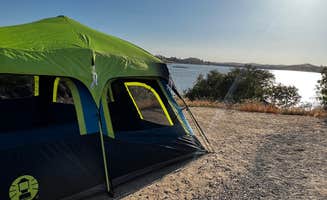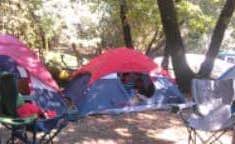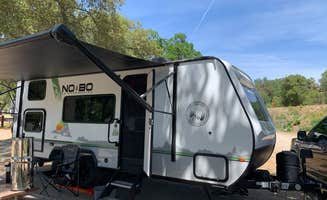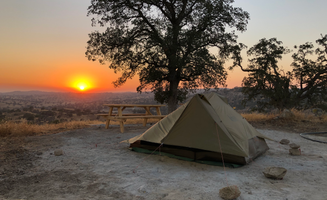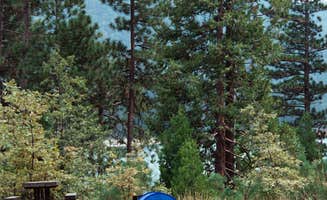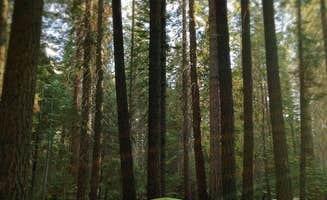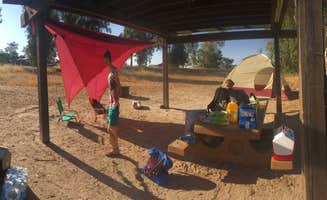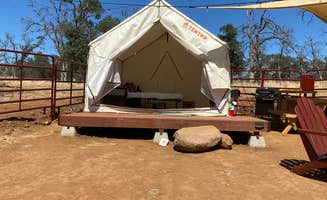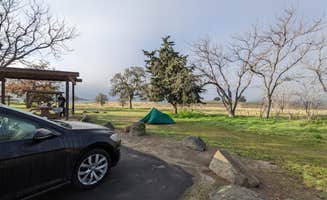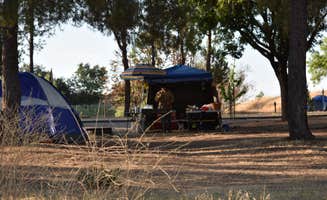Raymond camping spots are situated within the Sierra foothills at elevations ranging from 1,000 to 5,200 feet, creating diverse camping experiences. The region experiences distinct seasonal changes with lake levels fluctuating dramatically between spring and fall. Camping options near Raymond include both Corps of Engineers campgrounds at manmade reservoirs and forest service sites offering access to Yosemite National Park.
What to do
Water activities at Eastman Lake: The COE Eastman Lake Codorniz Campground provides access to fishing and boating opportunities. "Fishing is good. The Corps have added more electric sites over the years and there were 5-6 that fit our 43' Blue Bird," reports Tom D.
Wildlife viewing: Observe native wildlife throughout the foothills. "Fall has a Tarantula migration and you will definitely see them. Coyote, Bobcat, and deer are frequently seen," notes a visitor to Codorniz Campground.
Swimming at local rivers: Many campers seek relief from summer heat in nearby waterways. "We drove to a beach area found about a mile up the road. There is also a day-use area across the lake with some good swimming sites," shares Haley M. about her experience at Codorniz.
Hiking on volcanic outcroppings: The region features unique geological formations. At Hidden View Campground, campers appreciate the "sparse and open foothills very beautiful in late winter," according to Nicco C.
What campers like
Quiet locations: Many campsites in the Raymond area provide peaceful experiences away from crowds. "It's a quiet campground on a hill. You are at least 30 minutes from any stores. The lake is beautiful," writes Candy H. about Hidden View Campground.
Shade in summer heat: With temperatures regularly exceeding 90°F in summer, tree cover becomes essential. At Shooting Star Sanctuary, guests appreciate the natural cooling. "We had a shared space, good thing they were really friendly. It was a very well shaded area that we got!" notes Patricia C.
Animal interactions: Several campgrounds offer unique wildlife encounters beyond typical forest animals. "Jason was super helpful and friendly, he helped us build a fire and showed us around. After we talked for a little he opened up the gate to release several mini pigs, mini goats, ducks, and chickens!" writes Marco V. about Shooting Star Sanctuary.
Proximity to Yosemite: Many campgrounds serve as convenient bases for park visits. "Great spot near Yosemite south entrance. Very quite and private," reports Clément D. about Goat Meadow.
What you should know
Fluctuating water levels: Reservoirs in the area can change dramatically through seasons. A visitor to Millerton Lake State Recreation Area notes: "Even with all the rain, the lake isn't very full. The campground, including the bathroom, was clean."
Wildlife considerations: Local fauna requires proper preparation. "We were warned that rattle snakes are out, but we were fortunate not to see any ourselves. There is also quite a bit of brush around the campsites so be aware if you bring dogs," advises Haley M.
Ground squirrel issues: At Millerton Lake State Recreation Area, one camper reports: "We would not stay here again until the park gets control of the ground squirrels. We heard stories of cars and RV's being towed out because they chewed through wiring."
Remote locations: Many campgrounds require planning for supplies. "You are at least 30 minutes from any stores. The lake is beautiful but the campsites with power and water do not give a view of the lake at all with the exception of 42," advises a Codorniz camper.
Tips for camping with families
Select accessible sites: Not all campsites are equally suited for families with young children. "These are the closest sites to the water in the campground, but unfortunately water access is pretty limited. There's a small trail that leads down to a rocky edge, but wouldn't be great for small children."
Playground access: Some campgrounds offer dedicated play areas. At Wawona Campground, "Jump in the creek for a swim or walk across the road and check out the covered bridge and barn around the pioneer history center. Swimming holes all up and down those creeks."
Animal experiences: Certain campgrounds feature interactions with farm animals. "Stayed here with wife, two friends, and dog. Great selection of sites, overlooking pond, lots of farm animals, and very friendly and courteous host," writes Harry J. about Shooting Star Sanctuary.
Consider site privacy: Campground layouts vary significantly. "Sites #9-11 make up the cul-de-sac so it was great for our kids to ride their bikes and scooters. It would make the perfect group site as they were a bit tucked back from the other sites," advises a family who stayed at Codorniz.
Tips from RVers
Site accessibility challenges: Some campgrounds have difficult access for larger rigs. "The site was 39 and it was right next to the bathroom. To leave with a 26' travel trailer I had to pull out and back down another road just to exit the park," reports Michael G. about High Sierra RV Park.
Leveling considerations: Many sites in the foothills require effort to level. "Sites are asphalt. Many sites may take some time to level. Back in and pull through are available," notes a Codorniz camper.
RV size limitations: Most campgrounds have restrictions or challenging access. At Shooting Star Sanctuary, "While the dirt road/driveway is a bit bumpy, we had no problem with our 23' Airstream -- just go slowly and you'll be fine (there was a 40' Class A there, too, if that says anything)," reports Caroline S.
Full hookup availability: Electric, water and sewer connections vary widely between campgrounds. "Our first time here, reservation required before showing up. This was the off season so everything was open and quiet. They have full hook ups or you could do dry camping. Every camp has it own water so that was nice. Good price for $20," notes Gary V.


